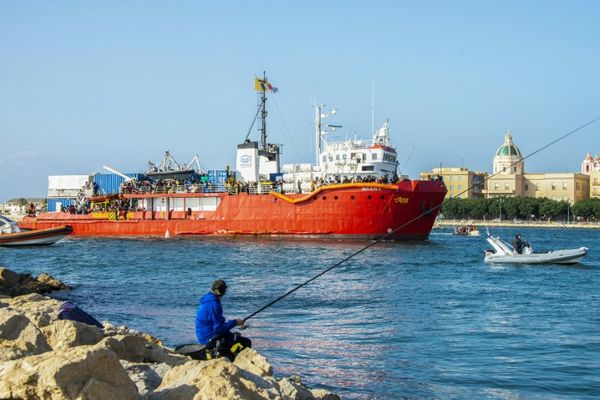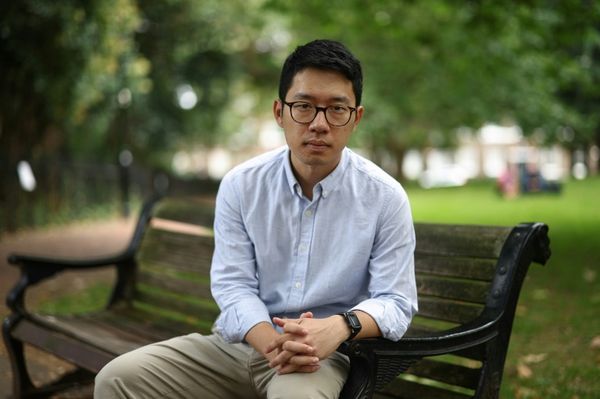
In a forest clearing in the verdant outskirts of Cartagena, dancers move slowly to instrumental music, their movements mirroring the swaying of the trees. The performers are members of the Cuerpo de Indias, a professional dance company affiliated with the Colegio del Cuerpo dance school, which earlier this year celebrated the opening of its first permanent home, an outdoor campus 15 minutes north-east of the city.
Occupying four hectares (nine acres) of land donated by the mayor’s office of Cartagena, the campus is dotted with striking slatted wooden buildings made from recycled or repurposed materials, including a 12m-high domed performance space shaped like a termite mound, called the Athanor. Around the buildings are sculptures made of wood, shells and scrap metal by the dancer and choreographer Álvaro Restrepo, co-founder of the school.
It is often the first time the dance students, most of whom come from underprivileged and sometimes dangerous urban districts, have spent time in nature.
“Nature has become a luxury and in providing this space, we want these students to know they are protected here and that they have a right to beauty and a right to be treated with dignity,” says Restrepo.

A striking structure known as the Athanor serves as the main dance studio on campus. Inspired by termite mounds, it houses the main performance stage for the dancers and visiting guests. Here, the architect and his team take a break during construction
In 1997, Restrepo and the French-Colombian choreographer Marie-France Delieuvin established the school in response to the civil war – as “an act of resilience” to heal “the wounds of the collective body of Colombia”. The pair began by visiting neighbourhoods in Cartagena that were occupied by people displaced by the war, and working with the children there. Now they travel to schools around the country, where they perform, hold workshops and invite children to audition.
While some have learned local folkloric dances, others have taught themselves in the local hip-hop scene, or champeta, the popular dance originating from the Afro-Colombian population. Others have no dance experience.
“We don’t choose them because of their talent. We choose them because of their commitment, their desire, the fire in their eyes, that’s what we believe is real talent,” says Restrepo.


Katrin Taharón (21), a pre-professional student of the School, dances around an outdoor installation made by Álvaro Restrepo during a performance at the School’s new campus for a visiting group of international researchers. Photograph: Carlos Saavedra

Pre-professional student, Marcela Pineda, 20, is captured mid-performance at a recital at the new Pontezuela Campus. With its expansive landscaping, many dance performances happen outside in dialogue with nature. Photograph: Carlos Saavedra

During performance days on campus, the students incorporate the sculptures into their dances. Top: Lesideth Ortega, 18, rests briefly on a wooden sculpture; bottom: Sharith Puello, 19, and Marcela Pineda, 20, during a recital ‘in dialogue with nature’
The school has 140 students aged between nine and 17, who take part in an after-school dance programme three times a week. Nearly 90% of its pupils receive a full scholarship. A further 30 dancers aged 17 to 24 are members of the “pre-professional” and professional dance company, and are enrolled full-time and receive a salary.
Luis-Adolfo Ortega, 24, who has been at the school for four years and is now an understudy, says the school “saved him”.

Reflecting on his career in dance, Luis-Adolfo Ortega, 24, says: ‘Dance is like the air I breathe, something that saves me. If I didn’t find dance, I would be caught up in the streets or I would be dead’
“I come from a small fishing barrio of Cartagena where crime and violence are everywhere and where there are very few cultural spaces. El Colegio del Cuerpo saved me from that life. To enter this new campus, it’s like entering a totally magic world. The noise of the birds nurtures me. It helps me forget all that’s happening at home. It helps me reflect and think about a better world.”
One of the school’s founding goals was to break the cycle of violence and poverty in marginalised communities. Restrepo recalls how a local religious leader from Cartagena scolded him for giving the students false hope. “I was accused of creating an illusion for these kids, that they could have a career in the arts when they were destined to be workers in the factories of the industrial zone,” he says.
Today alumni of the school and company are working all over the world, including in Bogotá, New York and Berlin. The company has danced on stages in London, Johannesburg, Seoul, New York, Paris, Toronto and Lima.

A scene from Espíritu de Pájaro’ (spirit of the bird), performed by the Cuerpo de Indias at the national theatre of Bogotá in August. The company has performed all over the world, including London, New York and Paris
Delieuvin, who still runs the school with Restrepo, says providing an opportunity to dance also helps recovery from trauma. “Art opens many worlds, especially in a country like Colombia, where the body has been destroyed, massacred, during so many years of war. Dance, beginning with a body, can initiate a reconciliation – first with one’s self and then with others.”
“Here at the Colegio, we pride ourselves on giving back to society new citizens that understand how to deal with problems in a different way; that can express their pain or suffering in a different way. Citizens who do not have to give violence back to the violence they have received,” adds Restrepo.

Dancers in the upcoming performance of ‘Espíritu de Pájaro’ (spirit of the bird), take a break from rehearsal to speak with Álvaro Restrepo, director of the Schooll and the piece’s choreographer. Photograph: Carlos Saavedra

Dancers take a break from rehearsals for Espíritu de Pájaro (top), and (above) a ‘topsy-turvy’ cabin on the campus used for visiting artists and dancers. Leopoldo J Combariza, the structure’s architect, says: ‘Not one bush has been moved in the development of this campus. The master plan is nature’s plan, not mine’
Melissa Cuenut, 22, from the conflict-affected department of Antioquia in the north-west, says dance has been a form of healing for her.
“This country has suffered so much violence. And all the violence that has happened to our parents, our grandparents, continues to live in them. It has not been forgotten. They’ve been burned by it, and they carry these ashes. We, their children, carry these ashes too and feel the weight of these heavy emotions all the time. For me, dance is a miracle because we can put in our anger and sorrow to make something beautiful. And beauty in any form is a miracle.”

A scene from the show, ‘Espíritu de Pájaro’ (spirit of the bird), performed by the Cuerpo de Indias (the professional company of the Colegio) along with select pre-professional students at the Teatro Colón, the national theatre of Bogotá, from 17-19 August 2023. Photograph: Carlos Saavedra
Dancers from the Cuerpo de Indias company perform Espíritu de Pájaro in Bogotá







